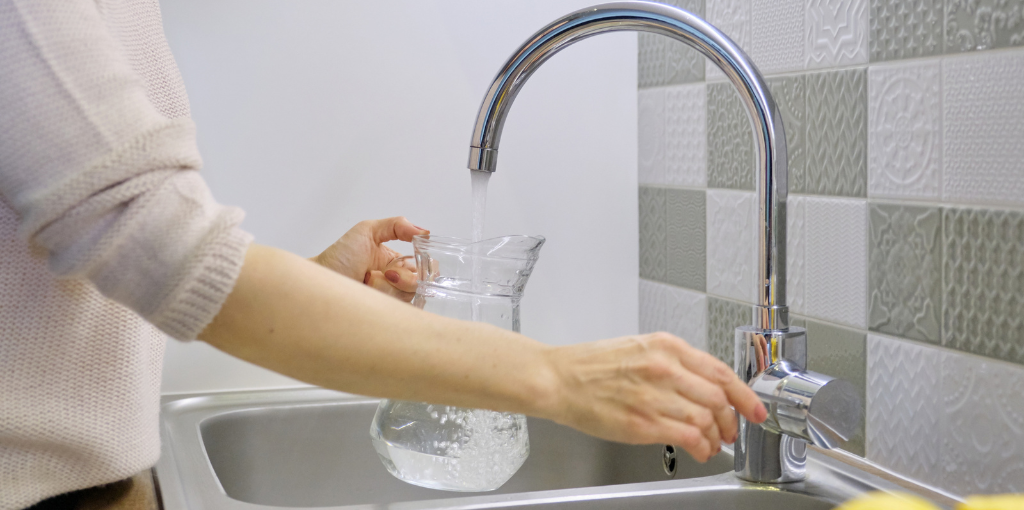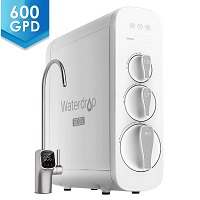One of the many indications of contaminated water is the bad taste or smell. If your tap water smells or tastes bad, it is likely contaminated and unfit for drinking and other domestic activities. Experts have also suggested that tap water tasting like chlorine, metal-tasting water, and rotten egg smell in water can be unhealthy and impair your consumption experience.
Do you wonder what causes these bad smells and odors? This blog explains the reasons behind your tap water’s bad taste and foul odor while offering practical and effective measures to improve your drinking water and make it safe for consumption.
Why Does My Water Smell Like Rotten Eggs?
The rotten egg smell in tap water is a common problem. Unfortunately, it is difficult to stand or get used to that tingling disturbance in your nose that comes with drinking such water. This adversely affects the consumption experience and may alter the drinking water quality.
Causes of Rotten Egg Smell in Water
While there are a few reasons your water may have a rotten egg smell, the biggest culprit is the hydrogen sulfide gas. Even when present in small amounts, hydrogen sulfide gas can easily lead to the smell or taste of sulfur in tap water. The smell is noticeable at a concentration of just 0.5 parts per million (ppm).
Hydrogen sulfide gets into tap water when sulfate and sulfate-reducing bacteria (SRB) combine. Sulfate is a naturally occurring element present in the environment, while sulfate-reducing bacteria produce hydrogen sulfide as byproducts after feeding off the sulfate.
Another way hydrogen sulfide gets into water is through the magnesium anode rod present in water heaters. The corrosion of this anode produces free electrons that facilitate the reduction reaction of sulfate by sulfate-reducing bacteria to sulfide. There are higher chances of hydrogen sulfide contamination in water heaters if the water is left in the heater for an extended period.
Health Effects of Drinking Water That Smells Like Sulfur
Although sulfur or hydrogen sulfide in water confers a rotten egg smell on the water, the water is not necessarily unfit for drinking. However, drinking such water can cause diarrhea and dehydration in some people. The risk is even higher in babies, considering their relatively undeveloped immune systems.
Continuous consumption of water that smells like rotten eggs may also bring about symptoms like nausea, fatigue, and headache. Despite not being direct health effects, these symptoms are undesirable. The symptoms may also not be prominent in adults because the body naturally adjusts to these changes over time. So, if you’re facing the questions like why does water make me nauseous or throwing up after drinking water, maybe you should check the amount of sulfur compounds in your water.
Why Does Tap Water Taste Like Chlorine?
Chlorine is present in your regular drinking water because it is one of the essential disinfectants used in public water purification. Water authorities in the United States usually introduce chlorine into the water to inactivate microbes like bacteria and others.
Although the amounts added are invariably low (1 mg/L), they may leave a taste of chlorine in your tap water. Chlorine in tap water only harms human health when present in amounts higher than 4 mg/L.
The chlorine taste and smell might be stronger in the drinking water of homes close to the treatment plants. Water temperature (cold water has a more pungent chlorine taste) and time of the day (morning supply has more chlorine) are other factors affecting the chlorine taste in water.
While minimal chlorine is not harmful, some people are naturally more sensitive to smell and taste than others. For such people, drinking such water can impair their consumption experience and discourage them from drinking sufficient water.
Why Does Tap Water Taste Like Metal?
Tap water can sometimes have a subtle metallic taste to it. But this is not the norm, so most homeowners wonder what causes this metallic flavor in their water. The first step is to identify the source of the taste. Then, depending on the source of the taste, you can determine if the metal-tasting water is healthy to drink or not.
What Causes the Metallic Taste in Water?
Metal-tasting water is often linked with the presence of artificial contaminants in water, but there are other causes, as highlighted below:
- Metal Traces
Traces of metals in tap water can add a metallic flavor to your tap water. These metals, including arsenic, chromium, copper, lead, and manganese, often get into the water through multiple channels.
For example, minerals like iron are added to disinfect public water. Arsenic, chromium, and copper occur as natural trace elements. Lead contamination occurs through the corrosion of pipes and fixtures, while manganese is found in surface water and groundwater as a natural mineral.
The reaction of these minerals with the plumbing fixtures and pipes in the home creates a metallic residue that ends up in the water.
- Old or Corroded Pipes
Most old houses are fitted with iron pipes, copper pipes, or galvanized pipes. These pipes had a maximum lifespan of about 100 years. With these pipes nearing the end of their lifespan, the water passing through them can corrode the galvanized walls. The zinc interior breaks to form small fragments of iron and other minerals. When these fragments settle in the water, they add a metallic taste and alter the color to reddish-brown.
- Low pH
The pH level of water can also affect the taste. Soft water with a pH of less than 6.5 is acidic and contains fewer minerals, and, by implication, has an odd or metallic taste. In addition, the lower pH can also be an indication of the presence of copper, lead, iron, and other materials.
How Do You Improve Your Drinking Water?
Drinking water that tastes or smells unusual impairs your drinking water experience and may expose you to potential health harm. Fortunately, there are effective ways to improve your drinking water quality if you are dealing with a bad taste or smell.
Identify the Source of the Taste or Smell
The first step to improving your drinking water is knowing where the bad taste or smell comes from. However, detecting the cause or source in most cases requires more than a physical or visual assessment.
If the water is coming from a public water system, the summary of the water quality of the water system is obtainable from the supplier or the water authorities. Alternatively, water samples can also be sent to accredited laboratories for advanced tests that provide comprehensive information about water quality and types or sources of pollution or contamination.
Practical Water Treatment Measures
Having identified the sources and types of external components responsible for your water’s bad odor and taste, the next is treatment. Here are some practical water treatment measures:
- Filtration
The filtration process separates particulate matter from water by forcing the water molecules through a suitable porous media or membrane. The size of the pores in the porous media determines the size of the materials that can be removed during filtration.
Ultrafiltration is a form of filtration that uses an ultrafiltration filter as its porous media. The pores on the membrane are about 0.001 to 0.05 microns in size, meaning several large particles and microorganisms are removed during the filtration process.
Reverse osmosis is a form of filtration that uses a reverse osmosis filter with a pore size of around 0.0001 microns, ensuring impurities are blocked out by the membrane. Reverse osmosis systems can effectively reduce water impurities, including chlorine, phosphate, nickel, sulfate, mercury, lead, barium, calcium, arsenic, fluoride, sodium, nitrates, and others. Check Top Reverse Osmosis Water Filter Systems For You in 2023.
Other notable filtration methods include microfiltration and nanofiltration.
- Distillation
Distillation is a water purification method that closely resembles a natural purification process via atmospheric water evaporation. Water distillers eliminate total dissolved solids and contaminants by converting water into steam. The water is subsequently free of contaminants once it transforms to liquid.
- Water softeners
Water softeners are designed to reduce the amount of hardness in the water using ion exchange technology. the chemical or iron removal process removes heavy metals like iron and manganese that are sometimes responsible for the metallic water taste. They also remove viruses, bacteria, and protozoa.
In Conclusion
Water energizes the body cells and ensures the body stays hydrated. However, more than drinking water, drinking inadequate or contaminated water will affect this machinery adversely. It is important to improve the quality of your drinking water, especially if it tastes or smells bad. We recommend trying out any of the treatment measures mentioned in this blog to ensure you and your family do not have to go through this horrible drinking water experience.





